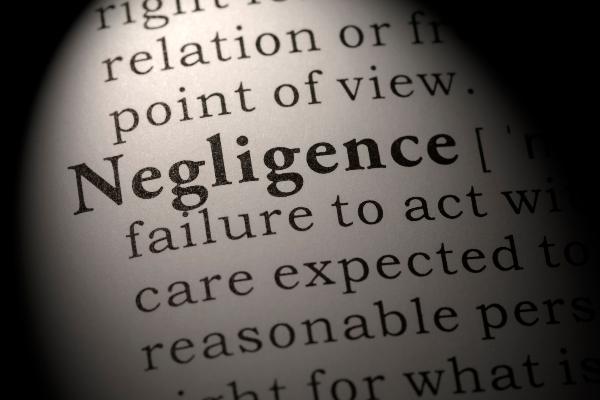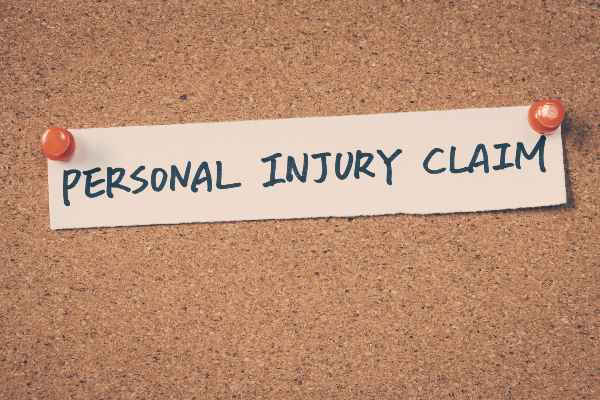Negligence is the basis of personal injury law, so if you want to prove that the other party is liable for the damages you sustained, you’ll have to prove negligence on their part first.
Simply put, negligence encompasses all sorts of actions and inaction which endanger others and are not bound to happen if someone shows reasonable care. Thus if anyone acted neglectfully, whether inadvertently or knowingly, they will have to bear the consequences.
However, no one will take your word for what you think happened; instead, you’ll need to prove negligence on part of the person responsible before you can claim any financial compensation from them. Luckily, this is exactly what personal injury lawyers are meant to do.
Read on to explore the meaning of negligence and how it is proven.
Definition Of Negligence

Negligence, as noted earlier, is failing to act responsibly. Every reasonable person owes a duty of care to other people on matters where their safety is at stake, and if they fail to uphold that duty of being reasonably careful, then their actions/inaction will be deemed as negligence.
For instance, if someone is driving their vehicle, they owe to everyone else on the road to drive safely, follow the speed limits, stop for the traffic signal, avoid cutting lanes, avoid aggressive driving, and so on. This is the duty of care that they owe to everyone else who shares that road with them.
They must therefore avoid acting in a manner that may endanger others and themselves. For instance, if they exceed the speed limit, the likelihood of getting involved in an accident becomes seriously worrisome, thus they must avoid doing so.
Failing to show responsibility will be considered negligence and thus make the other party liable for any damages that you might have sustained because of their actions.
Before we dive any deeper into creating an understanding of how establishing negligence works in principle, keep in mind that the terminologies we’ve used in this article are simply meant to get the legal concept across.
In a real-life scenario, the conversation about negligence is pretty much like how you talk in routine.
How Do Lawyers Prove Negligence: A Step-By-Step Guide
In the following sections, we’ll break down for you the four steps/key elements of negligence that a lawyer might use to prove liability on part of the responsible party:
Legal Duty Of Care
To establish negligence, first, your lawyer must prove that the liable party did indeed owe you a duty of care. This is true in cases where their actions could affect your safety and thus they had the responsibility of showing a reasonable standard of care.
This is where the vagueness lies.
There is no actual definition of what reasonable care is in different scenarios, it is simply described as acting in a manner that a prudent person would under the same circumstances. For instance, a responsible person would not speed, drive aggressively, or get drunk before driving.
Your lawyer will have to retrace the steps to see if the liable party owed you any duty of care.
Breach Of Legal Duty
Secondly, you need to prove that the at-fault party breached that duty through their negligent actions, i.e. by acting in a way that a reasonable person wouldn’t have in similar circumstances. Once again, you must retrace your steps to see where the breach of care lies.
What was it that the other party did wrong?
Did they speed too much, was the vehicle not properly maintained, were they drunk? In all of these scenarios, it is pretty easy to see that a responsible figure could’ve avoided a problem. This is precisely the point, you need to show that the breach did happen and it could’ve been avoided.
Causal Link
Next, your lawyer will have to establish a rational link between this breach of duty and the damages you sustained. The other party may debate that your losses happened because of something else and that their negligence did not matter in the picture, or at least not that much.
For instance, if something in your medical records showed that you already had a certain injury/issue when the crash happened, they might use that to suggest that your losses were not caused by the crash itself (or perhaps there was some contributory negligence.)
However, your lawyer will brush through your documents here and determine the best approach.
In most cases, proving a causal link is pretty simple.
Just be sure that you remember the details well, connect the dots without any room for error, and the rest will be fine.

Damages Sustained
Once that is all done, your personal injury lawyer will have to establish the intensity of the negligent behavior. This will be reflected in the damages you, the injured party, had to sustain; the extent of these will be proportional to the damages themselves.
Your losses will be divided into economic losses and non-economic damages, the former encompassing all the medical bills, property damage, special damages, and loss of income. The latter will cover the emotional distress and physical pain brought by catastrophic injuries like traumatic brain injury, spinal cord injury, internal organ damage, neck injury, broken bones, fractured bones, and so on.
Your lawyer will go through all of these losses and prepare a sum to present your demand/legal claim for fair compensation with the at-fault insurance provider.
The rest will then either be sorted out via negotiations or a personal injury lawsuit.
In the event of a lawsuit, you can expect to be awarded punitive damages in case of strict liability.
You Should Play Your Part, Too
Your personal injury lawyer will take care of the discussions, arguments, and negotiations, but if you want your case to progress smoothly, there’s a lot you can do to make sure that it is the case. Starting from the incident/crash/accident scene, you should photograph everything you see.
The idea is to show the lawyers and the insurance adjusters what you saw at the crash site, this not only includes your injuries and the property damage (if any) but scenes from the site itself. You can photograph a supermarket’s area with a wet floor but not wet floor sign, or a car crash scene showing the positions of the vehicles, skid marks, and so on.
The idea is to paint as complete a picture as possible to eliminate any deniability on the part of the responsible party.
After the accident, you should not delay seeking medical care. Visit a doctor/medical professional within 72 hours of the crash so that the other party can’t exploit your delay in their favor – which they will be able to do if you put off visiting the doctor for too long.
You should keep records of your medical expenses, extra spending, property damage, lost wages, loss of earning potential, and so on. Document the evidence wherever possible, i.e. you could start with gathering your medical reports, past medical records, bills, doctor’s notes, and a journal reflecting the level of physical pain and mental anguish you had to face.
Also, notifying the police in the event of the car accident is a responsibility on your part, do it on the crash scene, and don’t go away before the cops arrive even if the other party leaves. In the case of a hit-and-run situation, try to note the number plate details of the car driven by the at-fault driver.
Keep a copy of the police report with you.

Contact Babin Law, LLC in Columbus to See If We Can Help With Your Injury Claim
We explained how proving negligence is not as simple as pointing your finger at someone. You need solid evidence to suggest that someone acted recklessly and that behavior caused you the damages you sustained, not something else.
Be sure not to discuss your case with anyone but your lawyer because anything you say can jeopardize your status in the personal injury claim. Also, avoid giving any statement to the insurance adjuster until after you’ve consulted with your lawyer and know exactly what to say.
If you’re considering calling a personal injury attorney but feel that you lack the financial stability to seek legal counsel, don’t let that hold you back (there’s a two-year time limit, so hurry). The personal injury lawyers at Babin Law in Columbus, Ohio won’t ask for any upfront legal fees and the initial consultation is also free of charge.
When personal injury victims entrust us with their case, they won’t have to worry about paying our attorney fees until after they’ve won their personal injury settlements. This is called a contingency fee agreement.
Call us today to schedule a free consultation.
